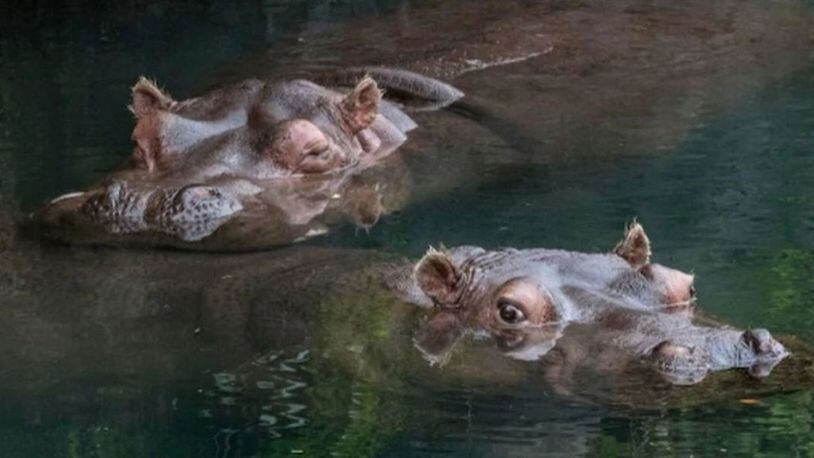Lily, 41, was born in 1978 at the Houston Zoo and moved to the Woodland Park Zoo in October 1979. She weighs 2,980 pounds.
Lupe was born in 1999 at Disney's Animal Kingdom moved to the Woodland Park Zoo in 2003. She weighs 2,900 pounds.
“Lily and Lupe are beloved by our staff and community. This decision was not made lightly, and we will all be sad to see them leave,” said Woodland Park Zoo president and CEO Alejandro Grajal. “Despite this, our highest commitment is to the full-life care and wellness of our animals. We want them to continue to thrive and will do everything we can to prepare them for a safe and successful move.”
A big decision for hippos Lupe and Lily: https://t.co/synKEatQUU For all the animals in our care, we’re committed to their daily wellbeing. But we also dedicate ourselves to assuring they will continue to thrive through all the ages and stages of their lives still to come. pic.twitter.com/briJRIjOyB
— Woodland Park Zoo (@woodlandparkzoo) February 6, 2020
Officials said Lupe is at an appropriate age for breeding and explained that the current hippo exhibit was designed 40 years ago and was not intended as a breeding facility.
Officials said Lily is healthy enough to move and acclimate to a new social group and explained that a similar move in a few years would be much more challenging.
The Zoo will work with the Association of Zoos & Aquariums Species Survival Plan to find the best placement for Lily and Lupe. Officials said their new homes will be identified by the spring and a move will likely happen in the fall or later.
Additionally, the Zoo is concerned as water usage in the hippo pool accounts for almost 20 percent of their annual water usage.
The hippos’ pool is drained, cleaned and refilled with water two or three times a week, officials said.
“(The Zoo) has been discussing options for the last couple of years related to hippo pool water usage and filtration,” a spokesperson for the Zoo wrote in a news release.
Zoo officials said it would be ideal for Lily and Lupe to be placed in a new home together, but said they might be placed in different homes if they are able to thrive in different social groups.
About the Author
